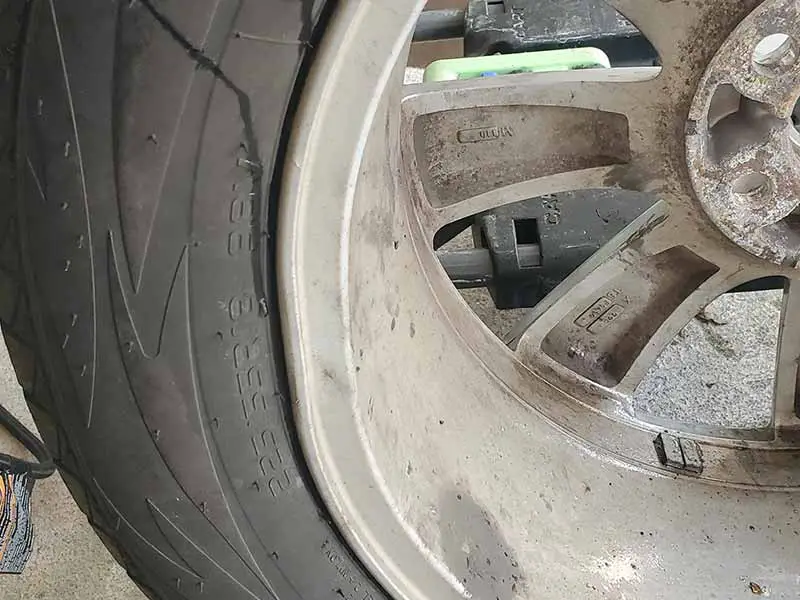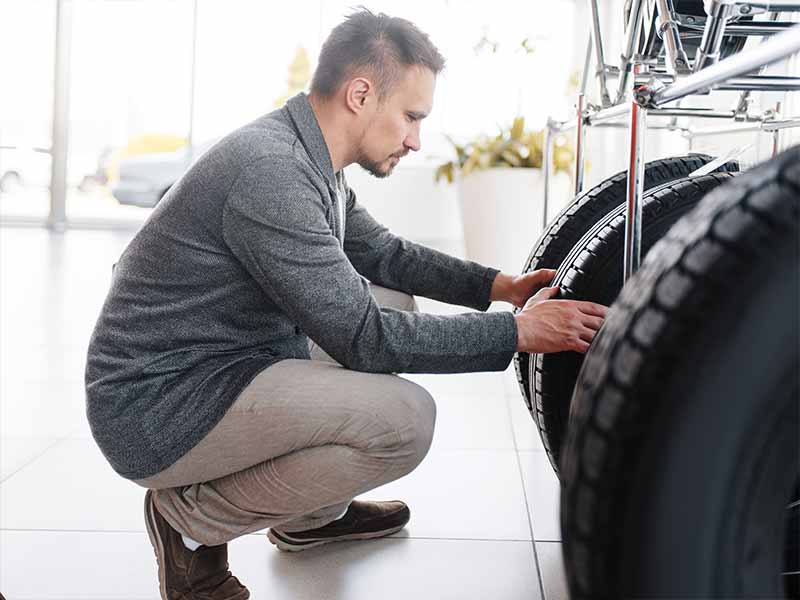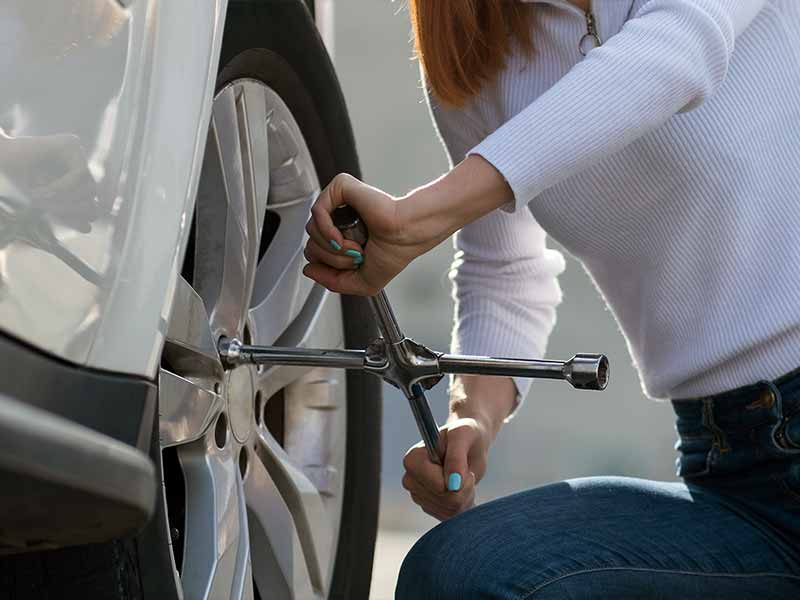You’ve marveled at the resilience of run flat tires, envying their ability to keep a vehicle moving even after a puncture. But have you ever paused to wonder if your own car or truck could harness these impressive features?
Can You Put Run Flat Tires On Any Car?
Yes, you can put run flat tires on any car, but it’s essential to consider compatibility, vehicle specifications, and wheel design. While run flat tires offer enhanced safety and convenience, they come with their own set of advantages and disadvantages.
In this article, we’ll delve deep into the world of run flat tires, comparing them with regular tires in terms of price, advantages, and longevity. We’ll also explore their compatibility with standard wheels, maintenance tips, and key considerations to keep in mind before making the switch.
Let’s take a closer look.

Can You Replace Regular Tires with Run Flat Tires?
Switching from regular tires to run flat tires is a consideration many vehicle owners ponder. While the idea might seem straightforward, there are several factors to consider before making the switch. In this section, we’ll explore the compatibility, benefits, and potential challenges of replacing regular tires with run flat tires.
Compatibility Considerations
- Vehicle Weight and Specifications:
- Before installing run flat tires, it’s essential to check if your vehicle can support them. The vehicle’s weight and suspension system need to be compatible with the stiffer sidewalls of run flat tires.
- Wheel Compatibility:
- Generally, run flat tires can fit on standard wheels. However, it’s crucial to ensure that the wheel’s width and diameter match the specifications of the run flat tire.
- Tire Pressure Monitoring System (TPMS):
- Most vehicles equipped with run flat tires also come with a TPMS. If your car doesn’t have this system, consider installing one. It alerts drivers when tire pressure drops, indicating a potential puncture.
Benefits of Replacing Regular Tires with Run Flats
- Enhanced Safety: Run flat tires reduce the risk of accidents due to sudden deflation or blowouts.
- Convenience: No need to change the tire immediately after a puncture, allowing drivers to reach a safe location or service station.
- Space and Weight Savings: Eliminating the need for a spare tire can free up space and reduce the vehicle’s overall weight.
Challenges and Considerations
- Cost Implication: As previously discussed, run flat tires are generally more expensive than regular tires. This cost difference becomes more pronounced when replacing all four tires.
- Ride Comfort: Some drivers find the ride quality with run flat tires to be firmer and less comfortable than with regular tires.
- Availability: Depending on your location, run flat tires might not be as readily available as regular tires, potentially causing delays in replacements or repairs.
Run Flat Tires and Wheel Compatibility
One of the common questions surrounding run flat tires is their compatibility with standard or “normal” wheels. Understanding this compatibility is crucial for anyone considering making the switch to run flat tires. In this section, we’ll delve into the relationship between run flat tires and the wheels they can be mounted on.
Basic Principles of Wheel Compatibility
- Wheel Dimensions:
- The size of the wheel, including its width and diameter, plays a pivotal role in determining tire compatibility. Both run flat and regular tires have specific wheel size requirements.
- Bead Design:
- The bead of a tire is the inner edge that sits snugly against the wheel. Run flat tires have a bead design that’s compatible with most standard wheels.
Can You Put Run Flats on Normal Wheels?
- General Compatibility:
- In most cases, run flat tires can be mounted on standard wheels. Their design is such that they fit onto the wheels in a manner similar to regular tires.
- Exceptions and Considerations:
- While run flat tires are generally compatible with standard wheels, there are exceptions. Some high-performance or specialized run flat tires might require specific wheel types.
- It’s essential to check the manufacturer’s recommendations and specifications before mounting a run flat tire on any wheel.
Benefits of Using Run Flats on Standard Wheels
- Cost Savings: Since run flat tires can fit on standard wheels, there’s often no need to invest in new wheels when making the switch, leading to potential cost savings.
- Flexibility: The ability to use run flat tires on standard wheels offers flexibility for drivers, allowing them to switch between tire types if needed.
Potential Challenges
- Wheel Wear: Some argue that the stiffer nature of run flat tires can lead to increased wear on standard wheels over time. However, with proper maintenance and regular checks, this can be mitigated.
- Balancing and Alignment: When mounting run flat tires on standard wheels, it’s crucial to ensure proper balancing and alignment. This ensures optimal performance and reduces uneven wear.

Advantages and Disadvantages of Run Flat Tires
Run flat tires, with their unique design and features, offer several advantages. However, like all products, they come with their set of drawbacks. In this section, we’ll explore both the pros and cons of using run flat tires.
Advantages of Run Flat Tires
- Safety: One of the primary benefits of run flat tires is the enhanced safety they provide.
- Controlled Response to Punctures: Unlike regular tires, run flats don’t deflate suddenly upon puncture. This means drivers are less likely to lose control of their vehicle.
- Reduced Risk of Blowouts: The sturdy construction minimizes the chances of a dangerous blowout.
- Convenience:
- Drive on a Puncture: After a puncture, run flat tires allow drivers to continue for a limited distance, providing time to reach a service station or a safe location.
- No Immediate Tire Change: There’s no need to change the tire immediately after a puncture, which can be especially beneficial in adverse weather or unsafe areas.
- Space-Saving:
- Elimination of Spare Tire: Many vehicles with run flat tires don’t carry a spare tire, freeing up trunk space and reducing weight.
Disadvantages of Run Flat Tires
- Cost:
- Higher Initial Price: Run flat tires are generally more expensive than regular tires due to their specialized construction.
- Potential for Frequent Replacement: Some users report that run flat tires wear out faster than conventional ones, leading to more frequent replacements.
- Ride Comfort:
- Stiffer Ride: The reinforced sidewalls that make run flats unique can also result in a firmer, less comfortable ride compared to regular tires.
- Limited Repair Options:
- Difficult to Repair: Due to their design, run flat tires can be challenging to repair after a puncture. In many cases, a damaged run flat tire might need to be replaced entirely.
- Limited Driving Post-Puncture: While run flats allow driving after a puncture, it’s only for a limited distance (typically 50-100 miles). After this, the tire must be repaired or replaced.
- Availability:
- Less Common: Run flat tires are less commonly available than regular tires, which might pose challenges when seeking replacements or repairs.

Run Flat Tires vs. Regular Tires: A Price Comparison
When considering a switch to run flat tires or evaluating their worth, one of the primary factors that come into play is the cost. In this section, we’ll compare the prices of run flat tires to regular tires and discuss the factors that influence these costs.
Basic Price Differences
- Run Flat Tires: Generally, run flat tires tend to be more expensive than regular tires. This is due to the advanced technology and materials used in their construction, especially the reinforced sidewalls.
- Regular Tires: Conventional or regular tires, while lacking the self-supporting feature of run flats, are typically less expensive. They are more common and have been around for a longer time, leading to competitive pricing.
Factors Influencing Price
Several elements can affect the cost of both run flat and regular tires:
- Brand and Quality: Just like any other product, premium tire brands might charge more due to their reputation, quality, and warranty offerings.
- Tire Size: Larger tires, whether run flat or regular, generally cost more than their smaller counterparts.
- Tread Pattern: Tires designed for specific conditions, like winter or off-road tires, might have a different price point due to their specialized tread patterns.
- Vehicle Specificity: Some high-end or luxury vehicles may require specialized tire types, which can influence the cost.
- Region and Availability: Prices can vary based on the region and the availability of specific tire models.
Long-Term Cost Considerations
While the initial purchase price is essential, it’s also crucial to consider long-term costs:
- Replacement Frequency: If run flat tires wear out faster than regular tires, you might find yourself replacing them more often, leading to higher long-term costs.
- Spare Tire Elimination: By using run flat tires, you might save money by not purchasing or replacing a spare tire. Additionally, without a spare, you might benefit from better fuel efficiency due to reduced vehicle weight.
- Service and Repairs: Run flat tires can sometimes be more challenging and expensive to repair than regular tires. In some cases, a punctured run flat tire might need complete replacement.
What Are Run Flat Tires?
Run flat tires, often referred to as “self-supporting tires,” are a specialized type of tire designed to remain functional even after suffering a puncture. Unlike conventional tires, which can go flat and become unrideable after a puncture, run flat tires allow for continued driving for a limited distance. This unique feature provides drivers with added safety and convenience.
Key Features of Run Flat Tires
- Reinforced Sidewalls: One of the primary features that distinguish run flat tires from regular ones is their reinforced sidewalls. These sidewalls are sturdier and can support the vehicle’s weight even when the tire loses air pressure.
- Self-Supporting Structure: The internal structure of run flat tires is designed to support the vehicle without the need for air. This means that even if there’s a puncture, the tire won’t collapse.
- Limited Driving Range: After a puncture, run flat tires can typically be driven for an additional 50 to 100 miles, depending on the tire’s design and the vehicle’s load. This gives drivers ample time to reach a safe location or service station.
How Do Run Flat Tires Work?
The working principle behind run flat tires is relatively straightforward:
- Puncture Occurs: When a run flat tire encounters a sharp object, it may get punctured just like any other tire. However, the difference lies in what happens next.
- Air Loss: As air starts to escape from the puncture, the tire’s internal pressure decreases. In a conventional tire, this would lead to a flat tire.
- Reinforced Sidewalls Take Over: The sturdier sidewalls of the run flat tire prevent it from collapsing. Instead, they bear the vehicle’s weight, allowing the driver to continue driving.
- Driver Notification: Most vehicles equipped with run flat tires also have a Tire Pressure Monitoring System (TPMS). This system alerts the driver when there’s a significant drop in tire pressure, indicating a possible puncture.
Benefits of Using Run Flat Tires
- Safety: One of the main advantages of run flat tires is the added safety they provide. In the event of a puncture, there’s no sudden loss of control, reducing the risk of accidents.
- Convenience: With run flat tires, there’s no immediate need to pull over and change the tire. This can be especially beneficial in unsafe areas or during adverse weather conditions.
- No Need for a Spare: Since run flat tires can be driven even after a puncture, there’s often no need to carry a spare tire. This can save space and reduce the vehicle’s weight.
Resources
Below are some links you may find helpful when learning about tires
- Absolutely everything you need to know about run-flat tires – Popular Mechanics
- What are run flat tires and are they right for you? – Family Handyman
Final Thoughts
While run flat tires offer undeniable safety benefits and the convenience of driving even after a puncture, it’s vital to weigh these advantages against potential challenges like cost and ride comfort. Regular monitoring and maintenance can maximize their lifespan and performance.
Good luck and happy motoring.





